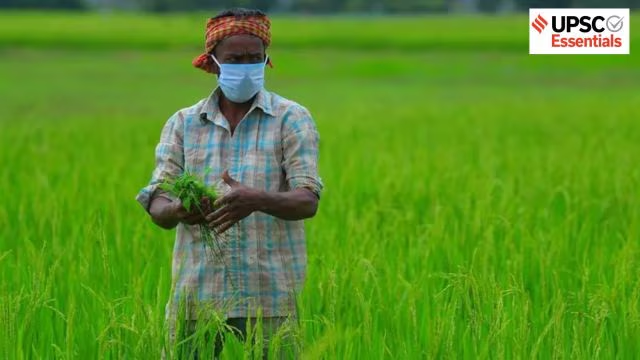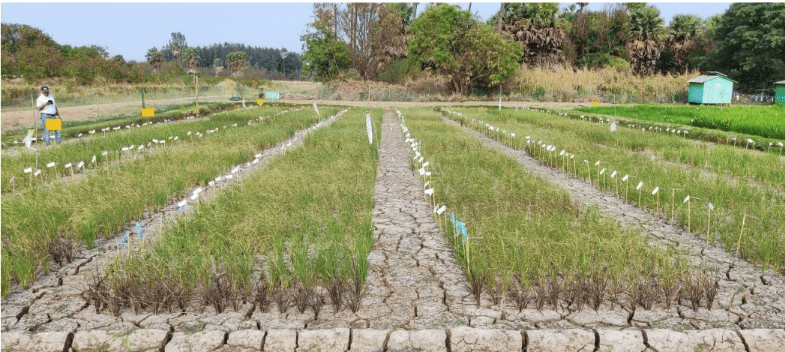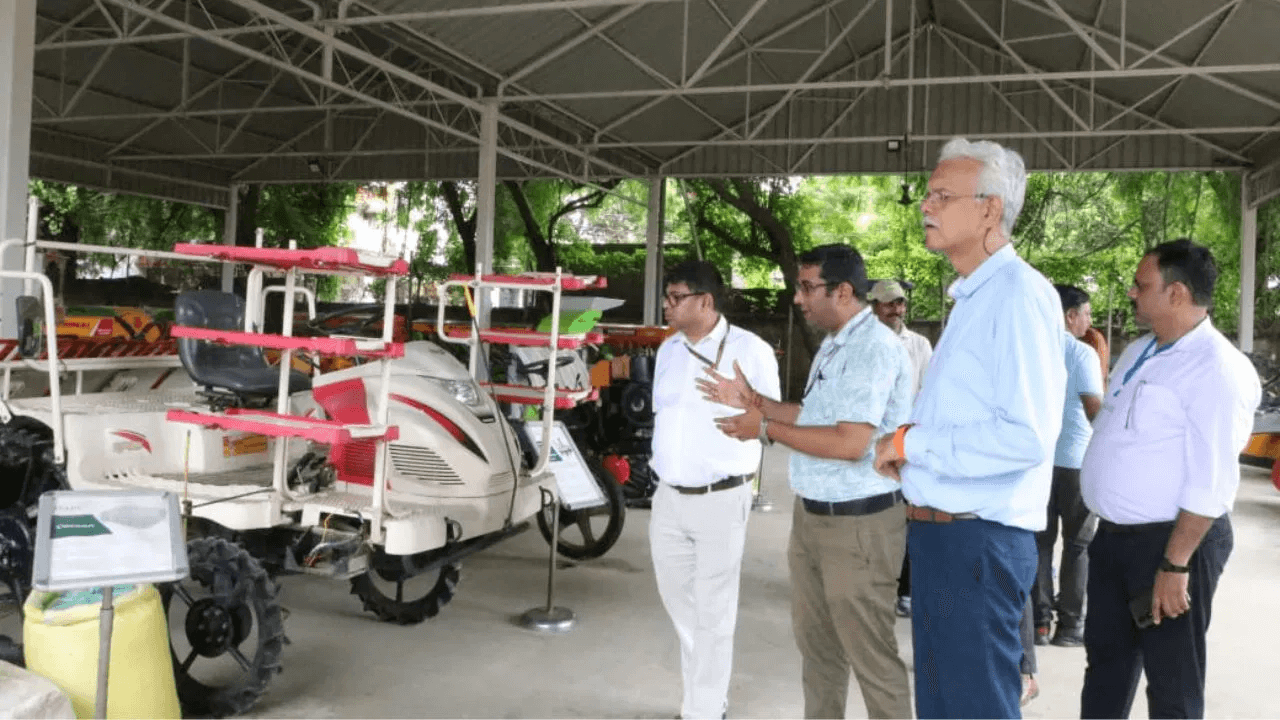Tags
Sustainable agriculture for climate resilience and food security
A number of issues such as climate change, environmental sustainability and food security accelerated the transition to sustainable agriculture. But what is sustainable farming and how does it help in addressing such challenges?

— Dr. Manish Maan and Niket Jain
(The Indian Express has launched a new series of articles for UPSC aspirants written by seasoned writers and erudite scholars on issues and concepts spanning History, Polity, International Relations, Art, Culture and Heritage, Environment, Geography, Science and Technology, and so on. Read and reflect with subject experts and boost your chance of cracking the much-coveted UPSC CSE. In the following article, Dr. Manish Maan and Niket Jain describe sustainable agriculture and its vitality in ensuring food security, promoting environmental sustainability and societal well-being.)
Sustainable agriculture is at the centre of India’s economic policy and plays a crucial role in combating climate change by achieving net-zero emissions by 2070. During the 32nd International Conference of Agricultural Economists, Prime Minister Narendra Modi presented India’s sustainable farming as a model for others.
The transition from conventional farming to sustainable farming happens against the backdrop of growing concerns over changing climate patterns, environmental sustainability and a steadily expanding population. But what is sustainable farming and how does it address such challenges?
Sustainable agriculture
The agriculture world over has reached a stage where it needs to move from an intensification-based approach to more sustainable and environment-friendly methods. Sustainable agriculture is a system of farming that focuses on meeting the current production demands without compromising on the ability of future generations to meet their needs. It takes into account the aspects related to ecological stability, economic viability, and socio-cultural continuity while preserving natural resources for future generations.
Principles and objectives of agricultural sustainability
Some of the key principles of sustainable agriculture include:
Increasing productivity: Consistently increasing agricultural productivity is crucial to maintaining food security. This must also focus on reducing the dependence on chemical fertilisers and pesticides. The very concept of efficiency needs to evolve, where efficient production must include water- and energy-smart production systems in addition to higher yields. Reducing the agricultural footprint while ensuring food security is one of the key attributes of sustainable agriculture.
Protecting and enhancing natural resources: Sustaining agricultural growth requires conservation and sustainable use of scarce natural resources like soil and water. Agricultural production depends directly on natural resources and therefore the sustainability of production depends on the sustainability of the resources themselves.
Indian agriculture remains predominantly rainfed covering about 60 per cent of the country’s net sown area and accounts for 40 per cent of the total food production. In such a scenario, sustainable agriculture focuses on maintaining and enhancing soil fertility, optimally managing water resources and reducing water pollution, and developing ways to reduce the emission of greenhouse gases.
Improving livelihoods and fostering inclusive economic growth: Adequate access to resources can significantly reduce poverty and food insecurity in rural areas. Agriculture is one of the most labour-intensive of all economic activities. Therefore, there exists a direct correlation between increased agricultural incomes and reduced poverty. Agricultural sustainability can only be achieved if it provides decent employment conditions.
Enhancing the resilience of people, communities and ecosystems: The stability of any economic activity including agriculture is greatly impacted by extreme weather events, which in turn also induce market volatility. Increased focus on making the various agri-stakeholders resilient to threats, both natural and man-made, would also contribute to sustainability. This will not only ensure stable productivity, but also better market economics by averting price shocks and volatility.
Adapting governance to new challenges: A successful and complete transition to sustainable production requires increasing and balanced participation of the private and public sectors ensuring equity, accountability, and transparency among other things. Farmers are provided with suitable incentives that promote the adoption of new and sustainable methods. Effective governance holds the key to impactful implementation of these measures including enabling policy initiatives and suitable legal and institutional framework.
These principles, individually as well as collectively, also support the Sustainable Development Goals including SDG1 (Reducing Poverty), SDG2 (Zero Hunger), SDG3 (Good Health and Well-Being), SDG5 (Gender Equality), SDG6 (Clean Water and Sanitation), SDG8 (Decent Work and Economic Growth), SDG11 (Sustainable Cities and Communities), SDG12 (Responsible Consumption and Production), SDG13 (Climate Action), SDG 14 (Life Below Water), SDG15 (Life on Land), and SDG16 (Peace, Justice and Strong Institutions).
Methods of sustainable agriculture and their advantages
Organic farming: It is a vital aspect of sustainable agriculture that emphasises ecological balance and the use of natural inputs for production. It obliterates the usage of synthetic fertilisers and pesticides thereby promoting soil health. It involves practices like crop rotation and the application of organic fertilisers like manure and compost.
Organic farming is not only an environmentally sustainable method of agricultural production but also reduces pollution and health risks associated with chemical inputs while supporting rural livelihoods.
Agricultural productivity is sometimes a point of concern here. Yields are often lower in organic farming in comparison to conventional methods, however, the long-term benefits of improved soil fertility, reduced environmental impact, and enhanced resilience make organic farming a crucial component of sustainable agricultural practices.
Crop rotation: It is the practice of systematically alternating different crops on the same land over successive seasons. This method significantly enhances soil health and fertility by breaking pest and disease cycles, and reducing reliance on chemical inputs.
Agroforestry: It is the practice of integrating trees into agricultural landscapes, including crop or animal production systems, thereby creating a diverse and resilient farming system. This approach plays an important role in promoting sustainable agriculture by promoting ecological, economic, and social interactions. It also helps in enhancing farmers’ incomes by supplementing the production of traditional crops with timber, fruits, and other tree-based products. Agroforestry also promotes biodiversity by providing habitats for various species, including beneficial insects that naturally control pests and diseases.
Integrated pest management (IPM): IPM is a critical component of sustainable agriculture that minimises the use of pesticides while effectively managing pests. IPM is an ecosystem-based approach that combines various techniques, including biological control, cultural practices, habitat modification, and judicious use of pesticides. IPM does not seek complete elimination of insect diversity. Instead, it seeks to keep the pest population below levels that may be economically damaging while preserving beneficial organisms and promoting a healthy balance in the ecosystem.
Zero tillage: Zero tillage, also known as no-till farming, is the practice of growing crops without disturbing the soil strata through traditional tillage methods. This approach preserves the soil structure and enhances fertility, resulting in numerous environmental and economic benefits. This system involves sowing seeds directly into the soil, often using specialised equipment that creates furrows without turning the soil. This method significantly reduces soil erosion and improves the water retention capacity of soil.
Hydroponics and aquaponics: Hydroponics is the technique of growing plants in a nutrient enriched water medium, without the requirement of soil. This method is highly resource-efficient and requires significantly less water than traditional soil-based farming methods, aligning perfectly with sustainability goals. Since this method involves a controlled environmental setting, it significantly reduces the risk of land degradation due to overuse and further reduces the need for pesticides.
Aquaponics is another advanced technique that combines hydroponics with aquaculture. This is a symbiotic system in which the fish waste provides an organic nutrient source for the plants, while the plants help filter and purify the water for the fish.
Challenges to sustainable agriculture
Climate change: Indian agriculture is predominantly rainfed making it highly dependent on monsoons, which in turn increases its susceptibility to climate variability, including increased frequency of extreme weather events such as droughts and floods. Climate change could slash crop yields resulting in quantitative as well as qualitative decline in productivity impacting food security and farmers’ livelihoods.
Population: An expanding population will put further pressure on already stressed agricultural systems. Shifting to sustainable methods of agriculture that focus on organic productivity may face challenges due to reduced yield, posing a risk to food security for millions. The dependence of a large chunk of the population on agriculture for livelihood is also a matter of serious concern.
Lack of knowledge: Adoption of new technologies and practices is directly related to the level of awareness. This can be enhanced through institutional mechanisms and interventions like campaigns and workshops, and creating awareness about the success stories to encourage farmers to shift to sustainable practices.
High capital cost: Sustainability comes at a cost. The initial investments in infrastructure, equipment, and inputs that are required to carry out sustainable agriculture are often very high. The lack of access to credit, particularly in case of small and marginal farmers can hinder the adoption of sustainable practices.
Market access and post-harvest losses: Market access and post-harvest losses are significant barriers to sustainable agriculture in India, undermining its economic viability. Reduced usage of chemical inputs in sustainable farming often produces perishable and diverse crops that require efficient handling and storage. However, infrastructural inadequacies, such as insufficient cold storage and poor transportation networks, may lead to increased post-harvest losses. This reduces profitability and acts as a deterrent to the adoption of environmentally friendly practices.
Challenges before sustainable agriculture and food systems can be tackled under the holistic approach of ‘One Earth, One Family and One Future’. In this regard, the National Mission For Sustainable Agriculture (NMSA) is a defining move in the right direction. It is one of the eight missions outlined under the National Action Plan on Climate Change (NAPCC).
The NMSA aims at promoting sustainable agriculture through a series of adaptation measures focusing on ten key dimensions encompassing Indian agriculture, namely improved crop seeds, livestock and fish cultures, water use efficiency, pest management, improved farm practices, nutrient management, agricultural insurance, credit support, markets, access to information and livelihood diversification.
The NMSA has outlined the following objectives of sustainable agriculture:
Making agriculture more productive, sustainable, remunerative and climate resilient by promoting location-specific integrated/composite farming systems.
Conserving natural resources through appropriate soil and water conservation measures focusing on comprehensive soil health management practices based on soil fertility maps, soil test-based application of macro and micro-nutrients, judicious use of fertilisers, efficient water management to expand coverage for achieving ‘more crop per drop’, etc.
Capacity building of farmers and other stakeholders, in conjunction with other ongoing missions like National Mission on Agriculture Extension & Technology, National Food Security Mission, National Initiative for Climate Resilient Agriculture, etc., in the domain of climate change adaptation and mitigation measures.
Leveraging resources from other schemes/missions like the Mahatma Gandhi National Rural Employment Guarantee Scheme (MGNREGS), Integrated Watershed Management Programme (IWMP), RKVY etc. Establishing and enhancing inter and intra Departmental/Ministerial coordination for accomplishing key deliverables.
To sum up, sustainable agriculture is deemed to be a vital step in combating climate change and ensuring the resilience of our agricultural systems. By focusing on efficient resource utilisation, enhancing livelihoods, and fostering inclusive growth, sustainable agriculture offers a pathway to achieving long-term ecological stability, economic viability, and social equity.
https://indianexpress.com/article/upsc-current-affairs/upsc-essentials/sustainable-agriculture-objectives-methods-and-challenges-upsc-9523901/Published Date: August 21, 2024






